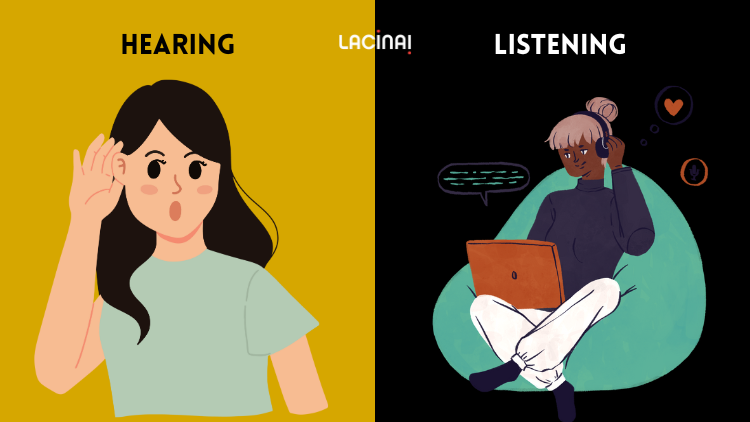Introduction
In interpersonal communication, the terms “hearing” and “active listening” are often used interchangeably, but they represent fundamentally different levels of engagement and understanding. This article explores the distinction between hearing and active listening, the importance of active listening in effective communication, and practical strategies to improve your active listening skills.
1. What is Hearing?
Hearing is the physiological process of perceiving sound waves through the ears. It is a passive ability that occurs naturally and involuntarily, allowing us to detect sounds in our environment. Hearing is a sensory function that enables us to recognize noises, voices, and other auditory stimuli.

2. Understanding Active Listening
Active listening, on the other hand, is a dynamic and intentional process of fully engaging with the speaker, understanding their message, and responding thoughtfully. It goes beyond simply hearing words; active listening involves focused attention, empathy, and a genuine interest in comprehending the speaker’s perspective.
Key Differences Between Active Listening and Hearing
- Engagement: Hearing is passive, while active listening requires active participation and mental effort to understand the speaker’s message.
- Comprehension: Active listening focuses on understanding the meaning behind the words, including emotions, intentions, and underlying messages. Hearing may only register the literal content of what is said.
- Response: Active listening involves responding to the speaker’s message with empathy, clarification, or validation, whereas hearing may not necessarily prompt a response.
The Importance of Active Listening in Communication
Active listening is essential for effective communication and building meaningful relationships. Here’s why active listening matters:
Enhanced Understanding
Active listening allows you to grasp the speaker’s thoughts, emotions, and perspectives more accurately. By paying attention to verbal cues, tone of voice, and nonverbal signals, you gain a comprehensive understanding of their message.
Improved Relationships
Active listening fosters trust, respect, and empathy in relationships. When individuals feel heard and understood, it strengthens the connection and encourages open communication.
Conflict Resolution
Active listening plays a crucial role in resolving conflicts by promoting empathy and facilitating constructive dialogue. It helps uncover underlying issues and find mutually acceptable solutions.
Practical Strategies to Improve Active Listening Skills
Enhancing your active listening skills can transform your communication abilities. Here are practical strategies to become a more effective active listener:
1. Give Your Full Attention
Focus entirely on the speaker without distractions. Maintain eye contact, eliminate interruptions, and show genuine interest in what they are saying.
2. Use Nonverbal Cues
Demonstrate engagement through nodding, smiling, and mirroring the speaker’s body language. Nonverbal cues convey attentiveness and encourage the speaker to continue sharing.
3. Practice Reflective Listening
Paraphrase or summarize the speaker’s message to confirm understanding and show empathy. Reflective listening validates their feelings and reinforces your comprehension of their perspective.
Conclusion
In conclusion, while hearing is an innate ability to perceive sound, active listening is a learned skill that requires conscious effort and practice. By mastering active listening, you can enhance your communication effectiveness, deepen relationships, and navigate interpersonal interactions with empathy and understanding. Embrace active listening as a powerful tool for connecting authentically with others and achieving mutual understanding in both personal and professional contexts.
